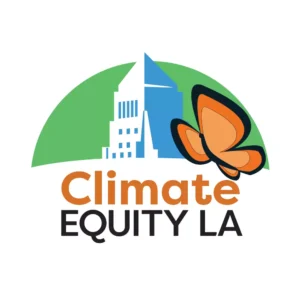Climate & Sustainability
Heat Story Map:
Illustrating the Risks of Extreme Heat to Angelenos
Extreme heat causes more deaths than any other climate hazard nationwide. Heat waves are more frequent and have greater intensity due to human-caused climate change from the persistent use of fossil fuels. Yet the health impacts from extreme heat are under-reported, as are its damages and costs to our City’s people and infrastructure.
The Challenge
Extreme heat is the most hazardous climate risk for Los Angeles, due in part to population density, the built environment, lack of tree canopy, and limited open space. Pollution amplifies exposure for vulnerable populations with pre-existing health conditions, and many homes in Southern California lack cooling systems. Communities of color face a disproportionate burden from extreme heat, which can be traced back to historical urban planning practices such as redlining, the construction of state highways near low income residential areas, and inequitable distribution of green spaces in minority and low income neighborhoods.
By 2050, we expect L.A. to experience 31% more extreme heat days. As global temperatures rise, extreme heat events are more frequent and longer-lasting, putting our public health, biodiversity, and our public and private infrastructure at greater risk. In Los Angeles, the effects are already evident, with five times more heat waves than just ten years ago. Areas that already have a lot of hot days will see even more, with inland valley communities expected to have twice as many extreme heat days by 2050.
The Solution
Supported by USC Dornsife Public Exchange, a team of researchers with expertise in extreme heat, environmental hazards, and public health teamed up to put together a Story Map to add narrative context to L.A.’s extreme heat challenges. By combining detailed and informative GIS mapping with accessible climate storytelling, the Story Map seeks to inform the general public about the risks associated with extreme heat in our own city, and resources to keep vulnerable populations safe during extreme heat events. It is also meant to provide quick access to information on the City of LA’s Heat Relief 4 LA Campaign, Emergency Management Department Programs addressing extreme heat and the City’s network of cooling centers and resources.
HEAT STORYMAP
The Partnership
This StoryMap was produced in partnership with the City of Los Angeles Climate Emergency Mobilization Office (CEMO), USC Dornsife Public Exchange, USC Environmental Health and Spatial Sciences Institute students and researchers to help build awareness among Angelenos about the increasing risks and costs from extreme heat.
Project Team Members

Rima Habre
PI
Keck School of Medicine

Jill Johnston
Project Advisor
Keck School of Medicine

Aviva Wolf-Jacobs
PhD candidate, Population Health & Place
USC Spatial Sciences Institute




Vivien Le
MPH Geohealth
Keck School of Medicine

Yan Xu
Postdoctoral Research Associate, Population Health & Place
USC Spatial Sciences Institute

Marta Segura
Chief Heat Officer, CEMO Director
Climate Emergency Mobilization

Gordon Haines
Deputy Heat Officer
Climate Emergency Mobilization

Rebekah Guerra Day
Management Analyst, Community Engagement
Climate Emergency Mobilization



Sujeet Rao
Practice Director, Health & Wellbeing
Public Exchange
Newsroom




